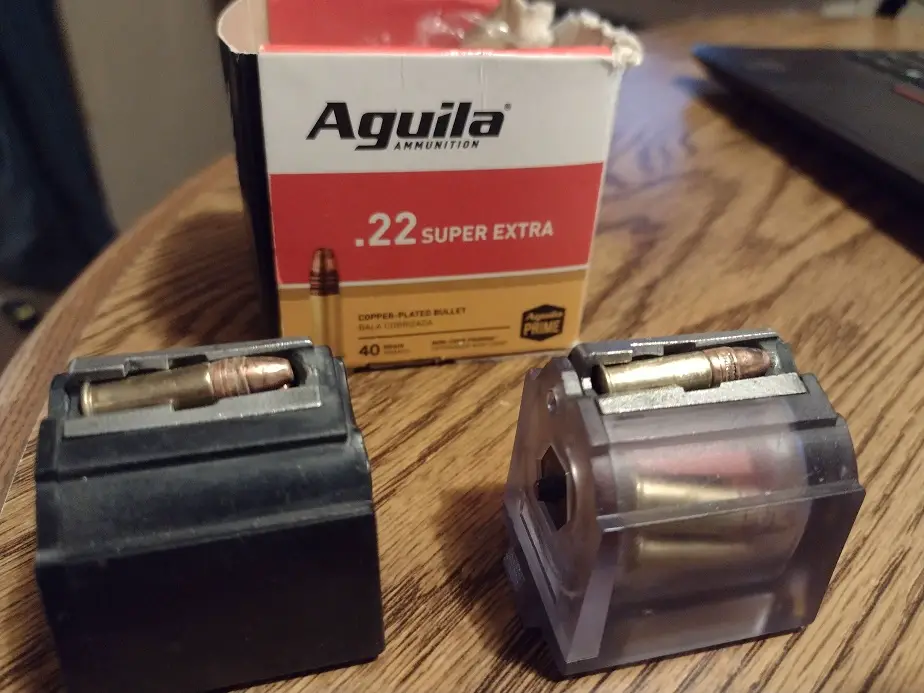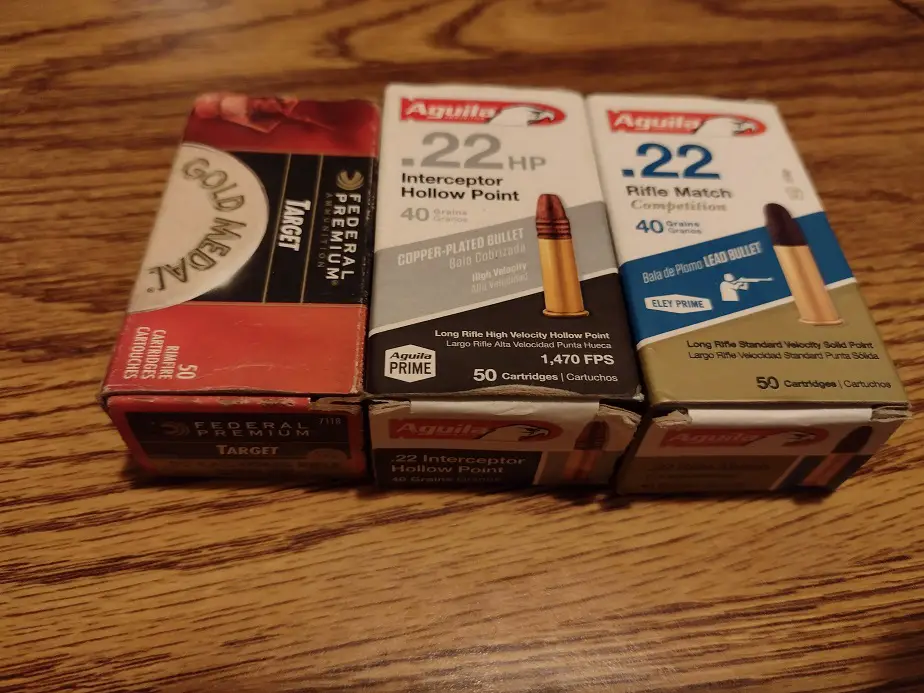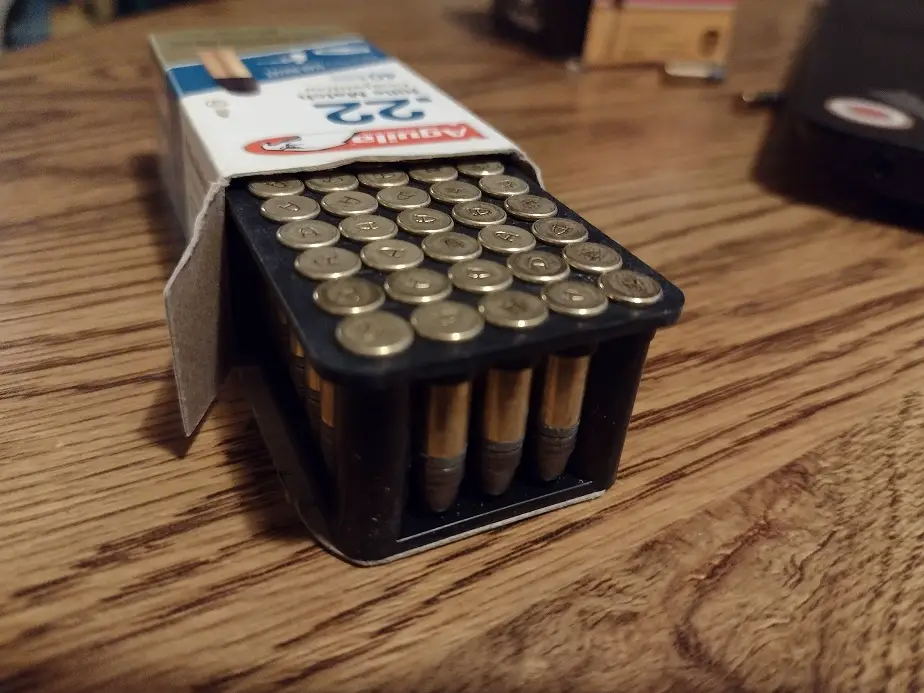I’ve carried my 22 in the woods since before I had my driver’s license. I’m one with the gun. Those little bullets have cleared a lot of traps and busted a lot of tin cans in my years running loose in the north country, but what about coyotes?
A 22 is small for coyotes, but it can work. The bullet is big enough, but it’s quite slow and heavily affected by wind and bullet drop past 50 yards, which makes hunting with it tricky. It’s a marginal option, but a skilled marksman can pull it off.
There’s actually a lot to discuss here. Effective range, bullet choices, ammo selection, and even the weather all make a big difference. let’s go through and break it all down.
Is a 22lr Good for Coyotes?
Skilled hunters don’t consider a 22 enough to reliably take coyotes. Its lack of hydrostatic shock means a coyote will not drop quickly and will likely run a long way and hide in the underbrush before dying. Many coyotes shot with a 22 are not recovered because they are very hard animals to track.
The 22 itself is a fine caliber. It’s the same diameter as a 223, a 22-250, and the slightly insane 22 Swift. The 22 category of bullets itself isn’t a problem for coyotes. the real issue with the 22lr is its low velocity. That is where the problem lies.
The 22lr has a range of velocity from about 1,100 to 1,400 fps in a rifle. To put things in perspective, I’ve seen muskets fire with more velocity than that. Compared to the little old .223 going 3,100 fps, it’s barely a pipsqueak.
The energy levels of 22 ammo, in a rifle, runs from about 120 ft/bs. to 200 ft/lbs. To put that into perspective, shooting a deer with a 223 has twice the bullet energy per pound of animal than shooting a coyote with 22lr.
You can certainly kill coyotes with a 22lr. It just has some serious ballistic hurdles that virtually every more powerful caliber doesn’t. You’d stand a big chance of making a bad shot, and even if you don’t you are likely to not recover your animal.

Why the 22 isn’t Great fot Hunting Coyotes
The real issue with the effectiveness and lethality of a 22lr for any use is its lack of hydrostatic shock. Hydrostatic shock is what causes a wound wider than the actual bullet. If a bullet is going fast enough upon impact, it will tear a much wider area of tissue.
Think of it this way. all tissue, muscle, skin. lungs, they all are somewhat elastic. They can move around and stretch. When a bullet enters soft tissue, it creates a wave of energy through the tissue around the bullet. Kind of like a slow-motion video of someone getting punched. The tissue temporarily stretches away from the impact area.
A bullet creates that same energy wave, but all the way through a target. Now, if the energy wave is fast enough, the tissue won’t have time to flex and move. it will begin to tear apart. That’s how a small bullet can make a big hole. hydrostatic shock is what causes a wound large enough to drop an animal in its tracks.
That all begins to happen around 2,000 fps, so there’s not going to be any of it even from the fastest 22lr ammo out there. Without that killer shock, the 22 acts about like a 9mm pistol. It only destroys or damages the tissue that the bullet touches.
22lr Drops, a lot!
The trajectory of a 22 is pretty much a downward slope. Most 22lr has a downward trajectory of 7 inches at 100 yards. For reference,a 55 grain .223 drops nearly 7 inches at around 300 yards. With the right zeroing distance, we can try to keep things fairly simple.
You should zero your 22 at 50 yards for coyote hunting. At least that’s what I recommend. For most rifle/ammo combinations, that’s about the ideal distance for general hunting and plinking. That way, From 10 to 50 yards, the bullet should be within about half an inch of your point of aim.
After that, you need to know your ballistics and have some way to measure holdover. At 70 yards, the bullet will be hitting about 1.25 inches low. At 80 yards, the bullet will be nearly 2.5 inches low, and at 90 yards, it’s about 4 inches low.
At that point, you will need to be compensating for the drop or you may miss entirely. A coyote’s body may only be 8 inches tall and 4 inches low would make a miss or just a belly scratch. With the 50-yard zero, a good hunting bullet like CCI MiniMags will be shooting 5.5 to 6 inches low. A slower bullet will be 7 inches low.

Best 22 Ammo for Coyotes
The best 22 ammo for coyotes is Aguila Interceptors or CCI Velocitors. They are the only 22 ammo that will expand in a coyote. CCI Minimag solids are popular among some hunters. Aguila tends to have more accurate ammo, but CCI is highly recommended for general hunting use.
I prefer a 40-grain hyper-velocity load for hunting with my 22 like the Aguila Interceptor. They are usually going around 1,400 fps and have a few inches less drop at 100 yards. They aren’t always the most accurate, but they don’t drop as much and are alright in the wind.
Some people prefer a solid-nosed target round for hunting with a 22. they can be very accurate, getting groups well under moa, but they are highly affected by drop and by the wind. for me, that’s a no-go. They are only better if you consistently read the wind and distance perfectly.
The middle ground is something like CCI MiniMags with a 40-grain solid lead nose. These are loaded hotter than standard, but not as fast as the hypervelocity loads. They tend to be more accurate than them too. it’s a middle ground option.
A lot of shooters would recommend CCI Stingers (a 32-grain bullet that goes around 1,600 fps). I don’t prefer the stingers myself. They are much more affected by the wind, even though they are faster. They drop only half what the Intercepters do, but are twice as affected by the wind. Pick your poison.
Tips for Hunting Coyotes with a 22
Get really close. For real, you really should get close. If you get within 50 yards, you can make a lung shot without thinking about windage or bullet drop.
Make sure the ammo shoots decent out of your gun. the accuracy needed to take down a coyote is about like shooting a baseball. You need to be able to hit your mark and hit it consistently. The 22 makes it a hard task with wind and changing distances, but it can be done if you are good.
You have to know how the wind affects your specific bullet out of your rifle. Study ballistic tables and shoot on windy days for practice.
The same thing goes for bullet drop. You have to know what your bullet drop is at a given distance, and you have to know what distance the animal is at. Once again, read up on ballistics tables and get some shooting practice at different distances.
If you can keep shots under 50 yards, that last part doesn’t apply. under 50 yards, hold straight and the bullet will do its job. It’s after 50 yards that you need to start learning your stuff.

